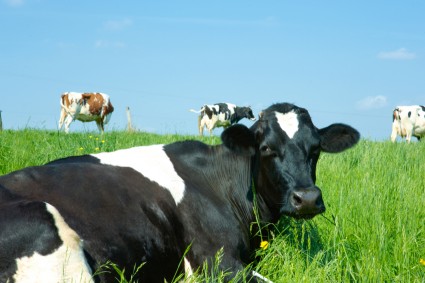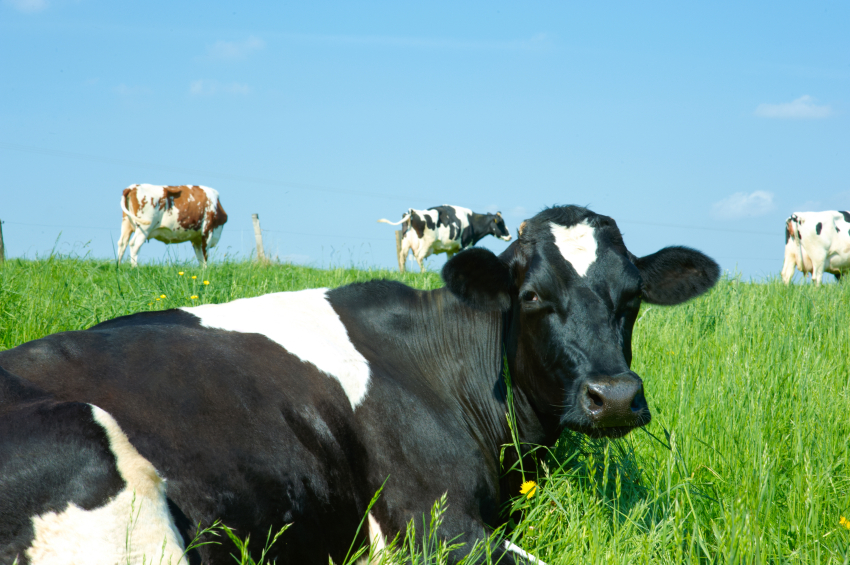When you’ve been in the trenches writing about a problem for a while, it’s good to see it finally getting traction in media and policy circles. That’s why I was thrilled to see Sunday’s New York Times piece on how a shortage of infrastructure is hampering the growth of local and regional food production.
 If you want more happy cows, agitate for more slaughterhouses and dairy facilities. When I helped start Maverick Farms in 2004 — and immediately started trying to source local meat and dairy for our farm dinners — it quickly became evident that the infrastructure needed to create an accessible, efficient, and profitable alternative food system in our area simply didn’t exist.
If you want more happy cows, agitate for more slaughterhouses and dairy facilities. When I helped start Maverick Farms in 2004 — and immediately started trying to source local meat and dairy for our farm dinners — it quickly became evident that the infrastructure needed to create an accessible, efficient, and profitable alternative food system in our area simply didn’t exist.
The infrastructure gap was one of the topics that inspired me to write about food policy in the first place. In my very first Victual Reality column — published Aug. 16, 2006 — I declared that “The problem facing local food production isn’t lack of demand; it’s lack of infrastructure.”
It’s a theme I’ve returned to dozens of times since (including in a recent op-ed for Newsweek). It is the lens through which I view the related topic of corporate consolidation of the food system — as large companies swallow up share of the food market, they shutter “inefficient” small processing plants and focus on operating ever fewer and ever larger facilities. The withering away of local-food infrastructure is a direct consequence of consolidation.
My Meat Wagon series of posts, which focuses on the depredations of the very few companies who control the vast majority of meat production in this country, is animated by the desire to see a revival of human-scale, widely distributed diversified agriculture that mixes crops and livestock.
I’ve argued again and again that local and regional food networks are never going to gain real traction without serious infrastructure investment; and that small and mid-sized farms, with their tight or negative profit margins, simply don’t have the cash flow to make those investments. Who should? To long-time readers, this will sound like a broken record: The federal government — which looked the other way while the food industry consolidated to levels that would make a 19th century robber baron blush, and which greases that system even now with crop subsidies — will have to step in. What we have is a classic market failure: growing demand for locally produced, pasture-based meat; growing desire among farmers to produce such meat; and a tight bottle-neck in processing infrastructure.
I even made the eminently sensible — and utterly ignored — argument last year that a big chunk of the stimulus spending be directed to rebuilding local and regional food infrastructure. Sigh.
So imagine my joy when I see stuff like this in the New York Times.
In what could be a major setback for America’s local-food movement, championed by so-called locavores, independent farmers around the country say they are forced to make slaughter appointments before animals are born and to drive hundreds of miles to facilities, adding to their costs and causing stress to livestock.
As a result, they are scaling back on plans to expand their farms because local processors cannot handle any more animals.
And the USDA, which has rarely until very recently uttered a peep about consolidation or the withering away of infrastructure, has taken note.
“It’s pretty clear there needs to be attention paid to this,” Agriculture Secretary Tom Vilsack said in an interview. “Particularly in the Northeast, where there is indeed a backlog and lengthy wait for slaughter facilities.”
According to the United States Department of Agriculture, the number of slaughterhouses nationwide declined to 809 in 2008 from 1,211 in 1992, while the number of small farmers has increased by 108,000 in the past five years.
And the agency is even devoting resources to fix the problem.
Mr. Vilsack … [is] urging farmers to band together and open local cooperatives or mobile slaughter facilities. The Agriculture Department is financing some mobile units and helping to build a regional facility near the Quad Cities in Illinois and Iowa. Helping small farmers, Mr. Vilsack said, will improve struggling rural economies.
“We recognize that the buy-local food movement is a significant economic driver in rural communities,” he said.
Of course, it remains to be pointed out that such funds — embedded in the “Know your Farmer, Know Your Food” program — amount to pennies on the dollar compared to what’s being spent on crop subsidies and corn-ethanol goodies.
But it’s a start — and gratifying to see.
Yet there remain massive gaps. The most glaring one today, to my mind, is dairy. According to this pretty amazing 2007 USDA report, there were 2507 processing facilities nationwide for fluid milk in 1972. By 2002, there were 524. Thus in the span of 30 years, we surrendered a startling 80 percent of our milk facilities. Over the same time period, the market share controlled by the top four dairy processors jumped from 17 percent to 42.6 percent. Today, a single company, Dean Foods, bottles more than a third of the milk consumed in the United States.
These trends illustrate a kind of permanent, structural crisis in dairy farming — farmers face constant pressure to scale up and intensify, or exit the business. Between 1994 and 2004, the USDA report informs us, “the number of dairy farms decreased by 45 percent, but milk production per farm doubled.”
Dairy farming recently entered particularly brutal phase — farmers are being forced to sell milk at below production costs, driving themselves into ruin and burnishing the bottom line of mega-processors like Dean Foods. Meanwhile, surviving farms tend to be large, heavy-polluting operations. Yet we’re living in a time when people are increasingly demanding access to milk from appropriate-scale, pasture-based farms. The time has come to bust up the dairy trusts — and rebuild the infrastructure that’s been laid waste as they gobbled up their smaller peers. Of course, I would say that.



